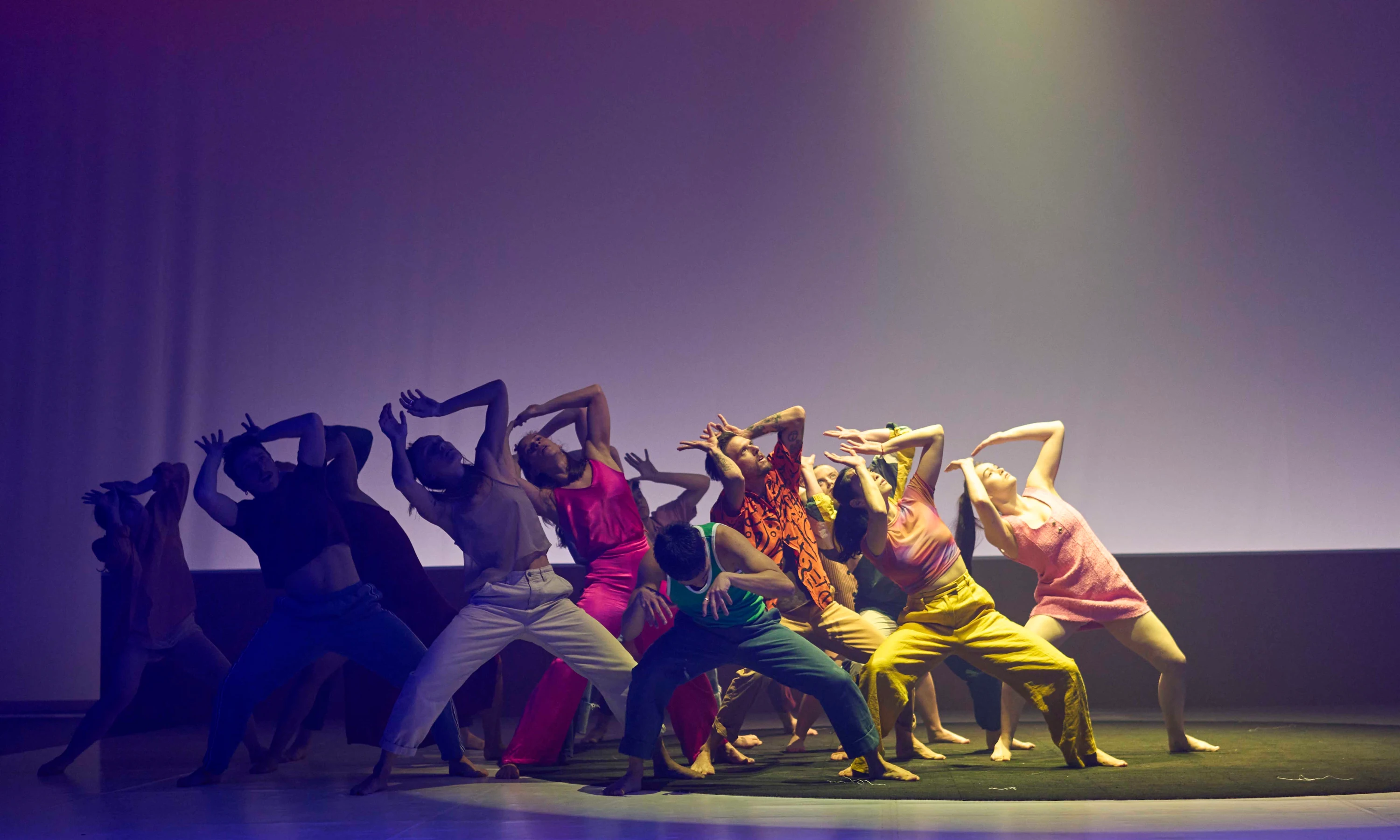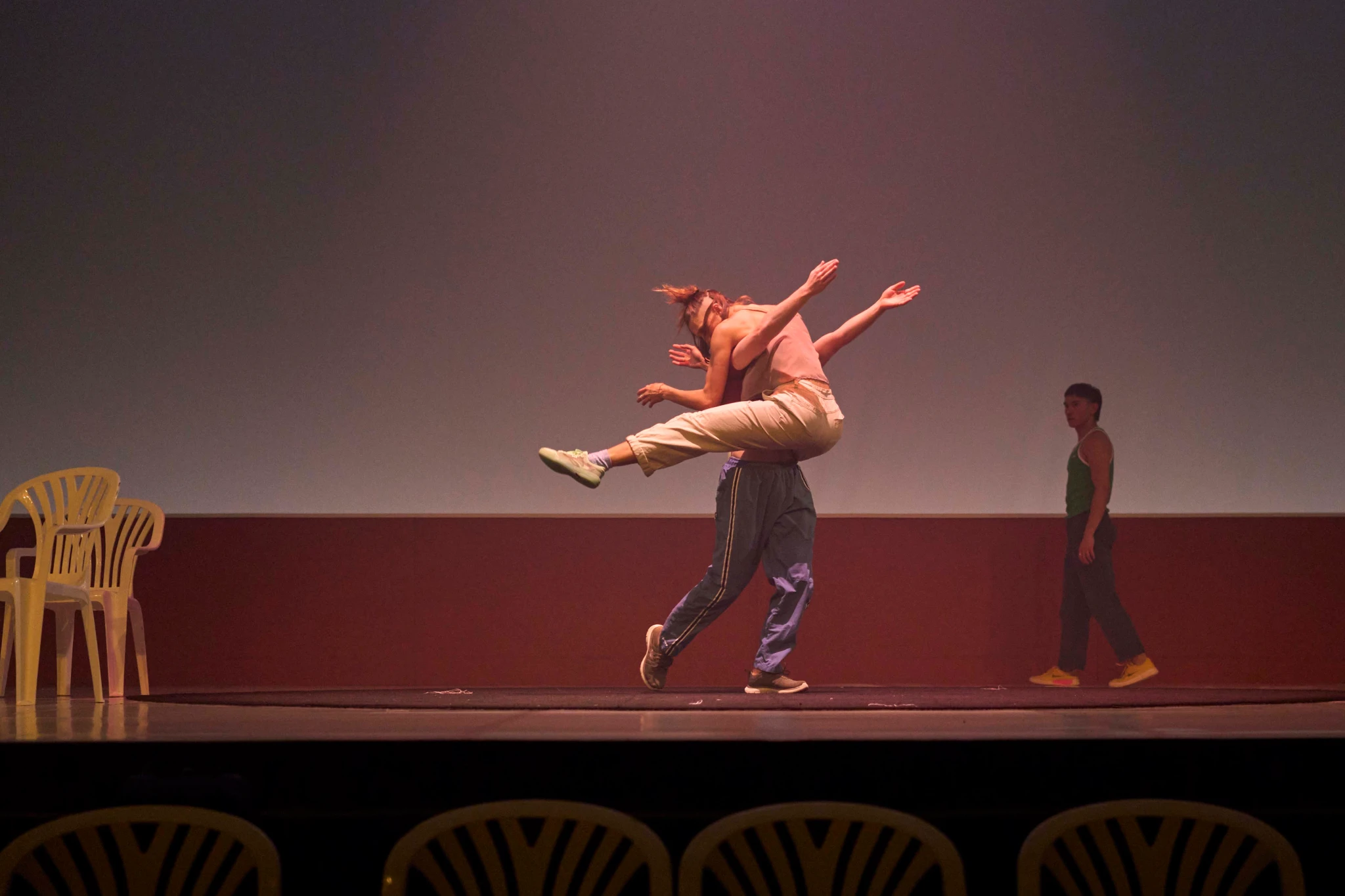Review: SAVAGE at Dunstan Playhouse, Adelaide Festival Centre
- Theatre Travels
- Sep 26, 2022
- 5 min read
Review By Lisa Lanzi
There are some beautiful connections enveloping the premiere of SAVAGE. Daniel Riley (Wiradjuri) first encountered Elizabeth Cameron Dalman, founder of ADT, 20 years ago and it was she who guided him toward his formative dance experiences in Canberra. Leigh Warren, ADT’s earlier artistic director and founder of Leigh Warren and Dancers, plus a number of his incredibly talented company members were present among the opening night audience. Funded by an Australia Council initiative for young First Nations dancers, Riley came to Adelaide for a year after his studies at Queensland University of Technology to join Warren and the LWD company. Additionally, two of the current dancers (Darci O’Rourke and Zoe Wozniak) also danced with Garry Stewart under his more recent leadership. Add to that, Lisa Heaven and Peter Sheedy (two former ADT and LWD dancers) are responsible for the students who join the company onstage this season.
On entering, the stage was already lit and haze floated throughout the space accompanied by sound and music. Full height strip lighting at the extreme downstage edges imprinted thin, cage-like stripes across the mist, a hint of a scrim, or barrier. While the audience settled, two figures surreptitiously drifted onto stage at intervals. Jada Narkle (Noongar yorga from the Wiilman and Yued tribes) was the roaming performer, her scrutiny directed outward, perhaps issuing a challenge. It was poignant and disturbing to experience the sense of walking into a place already owned and claimed - no irony or disrespect intended.
This new ADT ensemble is a powerful force. Riley has gathered six pleasingly individual dancers who all eloquently command the stage. Their camaraderie is already evident and will only deepen and it is clear that Riley is invested in them as artists. It was a delight to watch the sinuous control of Zachary Lopez’ astonishing physicality and the clarity Sebastian Geilings graces his movement and expression with. Brianna Kell, Darci O’Rourke and Zoe Wozniak are all accomplished performers and Jada Narkle, though listed as an emerging artist, competently takes the stage - it will be interesting to observe her artistic development.
SAVAGE is subtitled with the stylized phrase t.h.e/v.i.o.l.e.n.c.e/o.f/f.o.r.g.e.t.t.i.n.g and indeed, parts of the work conveyed anger, force, or explosive frustration. At times this was expressed through performers’ manipulations of prosaic, stackable patio chairs where they became part of the cast of characters. These also served as an entry point when performers broke the fourth wall using them to step up or down, and lifting, or replacing them into their ‘battle line’, across the auditorium floor against the stage.
There is much to unpack within this work but one component has provoked me to reflect on performing arts and the potential for political and moral comment therein. Accusation, frustration, and anger are all totally valid emotions and actions when generational wrongdoing, abuse of power, and long-hidden, or ignored, truths form part of the inspirational material - and they should be. However, the inclusion of empathy and gentler metaphors are also necessary to balance the more heated performative themes and to enmesh an audience emotionally, if the intention is to alter perceptions and shift future narratives to more positive outcomes.
The six company dancers and Daniel Riley were joined for this work by the excellent but under-used graduating dance students from Adelaide College of the Arts. Despite being a beautiful dancer with a powerful onstage presence, Riley might have been better to remain in the choreographic role for his mainstage ADT debut. He acknowledges the fine assistance of Associate Artistic Director Sarah-Jayne Howard plus Kate Champion as dramaturg. However, given Champion’s esteemed reputation, I expected more from her input. A dramaturg assists the shaping of choreographic and thematic material and intention, to clarify meaning, connection and trajectory of all the ‘episodes’ of the whole, in tandem with the choreographer. For SAVAGE, the flow and connection was not always successful and left some audience members mystified - I asked a number of them for their impressions. This lack of clarity was reflected in a lack of progression both choreographically and thematically for the work.
Some scenes might well have been the genesis of a whole other work, such was their innate beauty, power, and potential. However, the episodic collection of choreographic or symbolic episodes didn’t confer coherence nor the satisfaction of a wholly articulate dance theatre work. One occasional inclusion was challenging to decipher: Performers clad totally in fluffy white inhabited parts of the stage or interacted with the dancers, or fences, and finally, one figure was stripped of its mantle to reveal a Caucasian person. My initial reaction brought to mind an image of sheep and the destructive power conquering landowners exerted over the landscape and its traditional owners. Another person interpreted these figures as perhaps relating to Aboriginal mythology. Could these then have been the shape-changing anthropomorphic beings Wandjina, also known as Gulingi?
A plethora of arresting images, elements and symbols (whether I interpreted these correctly, or not, in the context of my white middle-class gaze) featured throughout SAVAGE. One powerful element was the use of two tall chain-link fences wheeled at intervals across the stage to confine, segregate, over-run, block or in some cases forcefully shift people or massed piles of those ubiquitous chairs. Images arose of the hideous treatment of humans in situations across our world, but more specifically, the colonialist (and continuing) degradation of our own First Nations People. I wondered too if the choice to use white chairs was symbolic of the chaos and conflict brought by white settlers, particularly when viewed adjacent to the large black circle set centre stage, akin to the black colour (representing Aboriginal peoples) adorning the ochre, red and black Indigenous flag.
As affecting as parts of SAVAGE undoubtedly were, opportunities were lost. For example, the possibilities of using the imposing height of the fences; or a more refined, subtle approach in the various scenes with chairs to gradually build the choreography of violence, frustration, and imposed order. Repetition is a fine choreographic device, but attention to variations on the theme might have contributed more successfully to meaning and impact. At times the music and a complex sound score by James Howard (Jaadwa) overpowered the action and perhaps considered volume variations would have been more affecting. Dean Cross (Worimi) states that his set and costume design “operates as a singular sculpture… a collection of objects and materials, colours and textures aspiring towards the condition of poetry.” Again, single design elements possessed great beauty or significance but the entirety of the design lent a disorder to the piece that did not necessarily serve, particularly in the random costuming choices. Matthew Adey’s lighting design and artistry was first rate and imparted welcome mood changes.
Daniel Riley has written pertinently of SAVAGE that he is “exploring the clash between power and identity… how our hearts and minds have been captured in the battle of the Australian imagination. Heroes and foes on the wrong side of history; details of events often remembered to suit the victors.” Riley lists several texts he has drawn inspiration from and is obviously a deep thinker with immense imagination and dedication and the theatre-going public definitely needs to savour this diverse, original voice. Choreographically, his work in SAVAGE is earthy and connected, at times athletic, or intimate and tender. There is a tendency to favour frontal facings and complex, intertwined idiosyncratic movement. Components of unison were welcome but could have been built upon further. The movement vocabulary is broad but quite grounded and mostly drawn from the contemporary genre with gestural overlays. He has also stated that future works will not be limited to proscenium presentation and his interest in non-traditional spaces will unfold as future works and narratives demand.
The future is bright for ADT with Mr Riley at the helm and personally, I look forward with eager anticipation. It is definitely time to re-energise this long-esteemed company and to re-focus on celebrating Australian content - Indigenous, white, and multicultural - with the Arts leading the way yet again, hopefully, to a more reconciled landscape.
Image Credit: Sam Roberts

